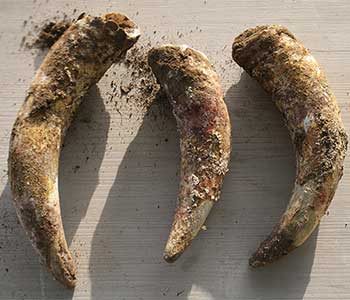
Biodynamic Winegrowing in One Sentence – an Attempt
The motivation for this article was the repeatedly expressed request of the sommellerie to have biodynamic viticulture explained in one sentence. A noble wish! Such complex content simply cannot be packed into a single sentence. Nevertheless, with the help of the "Introduction to Biodynamics" by Andrew & Kati Lorand, here is at least an attempt at an approximation.
May 2021
Lorand, Andrew & Kati (2017). Introduction to Biodynamics.Introduction to Biodynamics. A Course for a Spiritual, Ethical and Ecological Agriculture. Pézenas:
lulu.com
Quick translation with DeepL
"Biodynamics is a holistic, spiritual, social, ecological and ethical approach to agriculture, horticulture, food and nutrition" is the definition in "Introduction to Biodynamics", one of the books by biodynamics pioneers Kati & Andrew Lorand. Probably the most succinct. Beyond this sentence, now a bit more of an approach.
Biodynamic agriculture1 was initiated in 1924 with Rudolf Steiner's "Agricultural Course" and is considered the top discipline of ecological agriculture. Often misinterpreted, misunderstood and confused, it is the key to the health of viticulture and agriculture in general for those who take it seriously. Biodynamic farmers try to create an ecological and diverse - i.e. biodiverse - ecosystem that builds up and guarantees health and fertility within the farm. As far as viticulture is concerned, this goes hand in hand with the renunciation of synthetic chemical sprays and fertilisers, mechanical harvesting, purebred yeasts yeast and virtually all fining agents and interventions in the cellar. Instead, the wine is allowed to develop its identity there largely without manipulation. In the vineyard, compost must be applied to build up humus and promote soil microorganisms and living species. Greening and biodiversity measures (fruit and nut trees, herbs, shrubs, sowing, bird nesting sites, dry stone walls, animal husbandry, fallow land, ...) and manual harvesting are obligatory.
Preparations of animal manure, plants and minerals are needed to renew and balance the life forces of the farm. This maximises the nutritional quality and taste of the food (and grapes) grown. At the same time, the soil and plants are also brought into balance and strengthened against weather hazards, floods or drought, pests and diseases. Better, because healthy and living soils and plants produce better, healthy and living food and wine. It seems so logical!
The aim is the renewal of agriculture, with people and nature at the centre. Biodynamics is based on a deep love for the earth and agriculture, built on old peasant wisdom and practical common sense. The farmer must learn again to diagnose with a watchful eye on nature and to distinguish between what is healthy and unhealthy for his or her soil. In order to then choose the right remedy for the individual situation and agriculture. So it is also about rediscovering the farmer's vocation and taking care of the health and well-being of the soil. The farm is in permanent exchange and interaction with its surroundings, with the environment, with its employees and with the universe per se. Agriculture should be recognised as an individuality and treated as such. The goal is thus also a circular economy with energy self-sufficiency and extensive independence.
Steiner, and this is where anthroposophy2 comes in, emphazises regular meditation exercises for the inner efforts as a supplement to the outer ones. Mastermind, in terms of the mindfulness movement today. Also with regard to the three pillars of sustainability - society, ecology, economy. Steiner already predefined them a hundred years ago and demanded them from the farmers. Mankind does not stand outside of nature, but is part of it. He and she should behave accordingly and care for it through agriculture. For Steiner, biodynamics is anthroposophical medicine for agriculture.
In conclusion, biodynamics has nothing to do with wine stylistics. Biodynamic wines can be good or bad, delicately fruity or matured, clear or unfiltered, classic or orange. What they always are: a handcrafted product of a person who stands behind this viticultural method with full conviction as it affects all areas of his life.
2Incidentally, the term "biodynamic agriculture" was only created after Steiner's death. Until then one spoke of "anthroposophical farming".
3According to Steiner, anthroposophy includes the "knowledge of the spiritual being" and extends to everything that one can perceive in the "spiritual world", including the supersensible.




